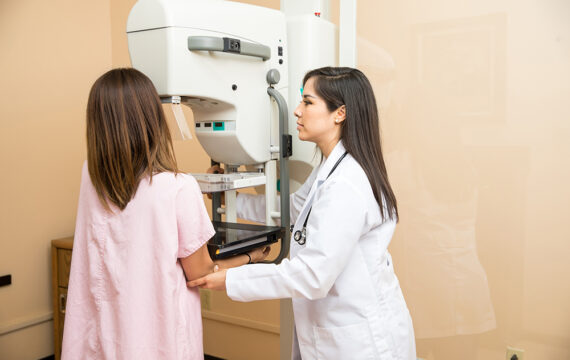An increasing number of technology companies, ranging from startups to tech giants, aim to redesign healthcare using artificial intelligence. Some come and go unnoticed; others have shaken the sector. As AI proves its effectiveness in healthcare, particularly in enhancing diagnostic accuracy, the industry keeps seeking the best ways to harness AI to provide safety, accessibility, and equitable care for all patients. The initial areas of AI impact in healthcare include administration, medical imaging, and drug development.
As reactive as the healthcare sector can be, employing natural language processing (NLP) across the industry has already become a necessity rather than an emerging trend. Advanced systems combining NLP with machine learning algorithms unravel the complexities of human language, enabling efficient data processing and making NLP a go-to tool for everyone from overworked clinicians to care and insurance providers as well as ROI-focused medical sales and marketing teams.
The increase in the number of institutions that use NLP in healthcare comes from the global push for digital transformation and data-driven processes, sparking the rise of smart ecosystems.
Data is now driving many everyday decisions and actions through various smart devices. The technology capable of analyzing unstructured text and generating workable data is propelling hospitals toward smarter digitalized healthcare, enabling data-driven diagnostics and treatment. Today, smart devices are linking up to create ecosystems, paving the way for smart homes, neighborhoods, and cities. In healthcare, this means the emergence of smart hospitals focused on simplifying documentation and administration through tech solutions.
Intellias has first-hand experience of the importance of digital transformation in the healthcare industry. Our work on designing a sophisticated eHealth platform has exposed challenges the industry faces while outlining possible solutions. We view application of NLP in healthcare as a key driver in reshaping healthcare industry processes for the ultimate benefit of both patients and doctors.
AI is technology’s most important priority, and healthcare is its most urgent application.
NLP through the healthcare stethoscope

Natural language processing is a field of artificial intelligence that translates human language into content understandable by computers. Essentially, it uses specially designed linguistic algorithms to extract information from spoken and written language and convert it into a machine-readable format for further processing and analysis.
Why is NLP so actively explored by the healthcare industry? Medical care providers typically produce lots of documentation in various unstructured formats. With the increasing adoption of electronic health records, medical institutions need a solution bridging the gap between raw text coming in from different sources and an organized database. NLP fits this need, with its extensive range of advanced features enabling digitization of healthcare records:
- Pattern recognition
- Image recognition
- Categorization
- Text analysis
- Predictive analytics
- Report generation
- Visualization
According to Statista, the global market for electronic health records has a distinct upward trend and is expected to reach almost US$18 billion by 2026. The market for NLP in healthcare shows similar growth of 18% annually. Global leaders in software research and development, such as IBM, Microsoft, and Amazon, are among the key players in the market of NLP in the medical field, rolling out pioneering solutions designed to make the lives of doctors and patients easier.
NLP techniques used in healthcare
NLP algorithms serve two main purposes: parsing incoming unstructured text and generating machine-readable content. In achieving these goals, they use a number of techniques.
| Optical character recognition | Optical character recognition (OCR) is often the first step in NLP processes aimed at recognizing text in input documents and digitizing it for further processing. OCR can extract text in various formats, including from digital images, presentations, and scans of printed or handwritten notes, logs, and other documents.
OCR solutions can be especially useful in healthcare applications for their ability to preprocess documents generated in the course of medical procedures: prescriptions, doctors’ notes, test results, CAT scans. When digitized, these artifacts are one step closer to becoming part of an electronic health record. |
|---|---|
| Tokenization
|
In the course of parsing natural language, an NLP application breaks down text into smaller units (words or sentences) that can be processed as discrete elements. These units, known as tokens, lay down the structure of the text for use in NLP algorithms.
Tokenization allows NLP applications to recognize patterns and extract meaningful information from input text. It boosts the efficiency of NLP models by adding structure to previously unstructured text. |
| Named entity recognition | A key step in natural language processing, named entity recognition (NER) identifies important entities in the text, such as individuals’ names, dates, locations, and company names. NER helps to extract and categorize meaningful information, streamlining further processes.
In healthcare, NER can be trained to identify doctor and patient names, diagnoses, and pharmaceutical terminology, contributing to the composition of informative EHRs. |
| Semantic and sentiment analysis | At this stage, NLP solutions perform deeper analysis of text units within the context to refine their meaning and reduce disambiguation.
Sentiment analysis attempts to determine the attitude (sentiment) expressed in a text and categorize it as positive, negative, or neutral. This is especially useful for parsing patient reviews and experiences, as it allows healthcare workers to more accurately evaluate patients’ emotions and opinions. |
| Topic modeling | With topic modeling, NLP applications discover semantic patterns and structures within text. As a result, they can automatically cluster similar structures into topics representing certain document types.
For example, topic modeling can help to determine if the source document is a clinical test or a patient record, thus speeding up processing and providing other insights. |
| Text classification | A fundamental stage of natural language processing and machine learning, the process of text classification, or tagging, categorizes text data into groups. The classification algorithms use patterns in the text to assign elements to specific groups.
Classification contributes greatly to accelerating and streamlining text search, which is a critical benefit for healthcare applications. |
Popular areas for implementing NLP in healthcare
Outstanding text processing and analysis capabilities make NLP suitable for use in multiple areas of healthcare:
- Pharmaceuticals. Pharma companies can leverage NLP capabilities to process clinical notes and reports, mine text from scientific literature, and retrieve information from patient records. In addition, NLP can help in ensuring regulatory compliance by automating documentation processing and identifying potential deviations.
- Healthcare providers. With the introduction of medical NLP algorithms, the administration of patients’ records becomes much more streamlined. NLP tools can update EHRs, parse various test results, create reports, and enhance clinical decision support systems. Another common use case of NLP is medical imaging, where language processing algorithms analyze and describe images (such as X-rays) to pinpoint anomalies.
- Biotechnology. In this field of medical science, NLP is mainly used for text mining. Algorithms help researchers quickly find information in public databases, patents, clinical trial records, and other scientific literature. Automating such tasks significantly accelerates data gathering, reducing the overall time companies need to complete research.
- Telemedicine. NLP can take the form of a chatbot, assisting doctors in providing treatment to patients. While such a chatbot should not be used in place of a proper medical consultation, it can handle preliminary questioning, collecting patient data and creating records.
No diagnostic enigmas: NLP use cases in healthcare
How is NLP used in healthcare? The industry has already found lots of uses for natural language processing. Most are related to digitizing the wide variety of documentation that medical institutions produce, but there are also other interesting uses of NLP technologies. Let’s look closer.
Management of electronic health records
In an ideal situation, a patient’s health record includes all their medical data since their birth and is updated whenever they receive a routine checkup or are diagnosed with a medical condition. But it often happens that many medical records exist only in non-digital form, such as printed or handwritten notes.
NLP helps to digitize such records to maintain a complete story of a person’s health. At the same time, it can assist in structuring any new content added to the EHR: X-rays, CAT scans, lab tests, etc. Advanced ML models can use this data for deep analysis and treatment predictions.

Unification of clinical records
When a patient has been treated by more than one medical institution or practitioner, their records often vary in structure and format. For doctors and medical researchers, it may be challenging to compare such records to identify patterns and isolate deviations.
NLP, with its entity recognition and semantic analysis capabilities, can considerably facilitate the composition of unified medical records. By extracting and classifying meaningful data from different documents, medical NLP tools structure and normalize information, making entries comparable and traceable.
Computer-assisted coding (CAD)
Medical coding describes retrieval of relevant data (diagnoses, procedures, drugs, and equipment used during treatment) from clinical records and the assigning of codes for billing purposes. Today, a lot of medical coding is done manually; medical coder is even a job role. However, adoption of NLP technologies will make CAD much quicker and more accurate.
Using NLP to extract coding information from multiple records, find patterns, and match data to correct codes improves coding quality and reduces the amount of manual verification and correction. The extracted coding data is used to train ML models that can automate medical coding even further.
Literature mining
In the pharmaceutical industry and in medical research, special attention is given to monitoring the latest papers, reports, and scientific literature for relevant information. For pharma companies, it is critical to follow any available resources, from dedicated websites to social media, for reports on the efficiency of drugs or treatments and any adverse effects.
This task can be assigned to NLP tools that quickly extract information on a given drug with all relevant details. Automated literature mining accelerates the organization of data used by pharma companies and researchers and generates accurate insights that can suggest improvements and innovations.
Clinical trial matching
In clinical trials, recruiting patients requires a lot of research and analysis. A healthcare NLP solution can accelerate patient matching by quickly processing various data, such as medical histories, personal details, or test results.
Based on NLP output, researchers can improve the quality of patient matching, targeting the right individuals and preparing a qualified demographic base for clinical trials. At the same time, NLP can support multi-center trials by organizing and processing data generated by multiple clinical institutions.
Clinical decision support (CDS)
Clinical decision support systems provide up-to-date information, helping healthcare providers make decisions about patient care and treatment methods. This information consists of both patients’ individual data and general details about condition-specific methodologies, clinical reports and guidelines, and other relevant information found in medical literature. Based on all of this data, doctors can make informed decisions about approaches to patient treatment.
With NLP on board, clinical decision support becomes significantly more focused. The technology extracts information from available resources, compiling a validated database for algorithms that summarize text to help doctors find answers quickly. When enhanced with AI-driven predictive analytics, such tools can assist with long-term treatment planning.
Telemedicine
Telemedicine, or telehealth, boomed with the onset of COVID-19, when people got caught in the dilemma of trying to avoid public places while needing extra medical attention. Also called mHealth, it became the magic solution especially for preventive care, offering people the opportunity to consult with a doctor without leaving their home.
However, in post-pandemic times, the popularity of telemedicine has not subsided. On the contrary, the telemedicine market shows distinct growth and is forecasted to reach US$285 billion worldwide by 2028. This trend has its roots in the convenience of remote medical care and the accessibility of quality telemedicine services in remote areas.
One of the rapidly developing telehealth areas is chatbots and self-service assistants. While by no means equivalent to a consultation by a qualified doctor, such solutions can help in prescreening patients and providing initial recommendations. Chatbots are especially appreciated in the mental health sector.
Since chatbots rely heavily on speech recognition, NLP solutions are becoming next to must-haves in chatbot development. From text chats to voice conversations, NLP recognition and sentiment analysis features significantly improve the quality of service.
Another use case for NLP-based voice recognition tools is remote healthcare for low-mobility patients. For some patients, using a keyboard or touchscreen may be challenging; in this case, a voice-operated telehealth application can make a difference.
Benefits of NLP: Rewriting the healthcare script, one word at a time

While the impact of NLP may seem like a familiar refrain, NLP’s potential constantly grows, with each cycle of technological advancement unlocking numerous applications and benefits within the healthcare lifecycle. From expediting diagnostics to assisting with treatment strategies, the precision, accuracy, and speed of natural language processing is redefining the healthcare field.
- Higher performance of data processing tools. Use of NLP to parse incoming text data boosts the speed and accuracy of text recognition and conversion into a machine-readable format. In turn, decision-making and communication processes are accelerated.
- Improved quality of patient care. Combined with advanced analytics, NLP generates insights that help doctors choose more effective approaches to treatment. When used in doctor–patient communication, NLP increases patient convenience, creating better experiences.
- More accurate data analysis. NLP applications in medical research and clinical trials raise the quality of data extraction and enable precise analytics.
- Validated clinical decision support. Introducing NLP tools in the clinical decision process allows healthcare providers to see a much bigger picture of each case and note critical details. As a result, clinical decisions can be justified by objective data and based on the latest research results.
Challenges of using NLP in healthcare
Compared to earlier models, today’s NLP models are better trained on more data. Still, when implementing a healthcare NLP solution in patient care, medical institutions and software developers need to consider various limitations:
- Data quality. The language of healthcare is very specialized, full of jargon and unique terminology that cannot be found elsewhere. Additionally, many words have several meanings, which might cause difficulties with text recognition and classification. In addition, ML models need specialized training to be able to work with medical texts.
- Bias. Input data may not represent the diversity of the focus population. Such bias may stem from a variety of factors, from sampling errors to social or demographic phenomena. As a result, NLP solutions may generate equally biased outputs. Such risks can be mitigated by using NLP tools based on explainable AI. These tools rationalize their results, allowing researchers to verify the absence or presence of any partiality in evaluations.
- Legacy healthcare systems. Many medical institutions still use outdated software and documentation management systems that are not compatible with NLP technologies and are incapable of processing large volumes of data.
- Interpretability. Many advanced NLP algorithms provide results that may be difficult to interpret and apply. To achieve workable outputs, NLP models need to be transparent and clear for healthcare providers using them.
Best practices of NLP implementation for healthcare
Here is a checklist for healthcare businesses that are considering implementing an NLP solution:
- Determine your use cases. Think about what you want the NLP tool to do and which goals you plan to achieve with it. This can help you outline the set of features the NLP solution needs to have.
- Acquire the NLP tool. You can buy a ready-made solution, build one in-house, or opt for custom implementation by a reputable AI software development company. When making this choice, consider your use cases and existing infrastructure. If you find a ready-made tool that is flexible enough to adapt to your software, go for it; otherwise, consider a custom solution that is scalable and can be adjusted to your workflows.
- Train the NLP model. Collect relevant data and prepare a training dataset, taking into account your specific needs.
- Ensure regulatory compliance. The healthcare industry is subject to strict laws and regulations, from HIPAA and the GDPR to local laws. Make sure the selected NLP solution complies with applicable data protection laws, regulations, and security standards.
- Regularly update NLP algorithms. As the healthcare landscape changes, NLP models and algorithms need to be monitored and adjusted. Check the relevance of MLP results and make necessary corrections.

Augment human intelligence with artificial one for quality healthcare
The advance of technology is transforming the medical sector. The industry is booming with all sorts of AI healthcare applications, from telemedicine to medical robots, genomic tech, and Internet of Medical Things (IoMT). In healthcare, where time, speed, and unbiased decisions are often a matter of literal life and death, AI-based NLP (or now-emerging LLMs exemplified by the widespread adoption of ChatGPT) can make a difference, empowering doctors with deep data-driven insights within a much shorter time.
As much as we advocate for technological revolution, artificial intelligence is only as good as humans design it and train it to be. By leveraging deep data-driven insights, NLP empowers caregivers and medical workers to make informed decisions swiftly, potentially saving lives while conforming to laws, regulations, and financial restraints. As AI-based tools become more common among medical care professionals, it’s clear that proficiency in using these technologies is becoming more important than ever.
Are you ready to deliver the best experiences to your customers and patients? You don’t have to navigate the road to complex technology integrations alone. At Intellias, we have a decade of hands-on experience mapping technology to real-life needs of clients in the healthcare and insurance sectors. Whether it’s data processing, cloud enablement, or intelligent automation, we will help you leverage technology to gain a competitive edge and promote people’s well-being.



